As is tradition in any and all fledgling countries, Uzbekistan intends to create and reinforce its newly gained and reinforced identity through sponsoring many national museums. Some of them focus on history, while some others are of a more artistic nature. Read on to find out more about the cultural museums found in the capital of Uzbekistan, Tashkent.
Museum of the History of Uzbekistan – https://maps.app.goo.gl/vKfDdG2jUeenHr997
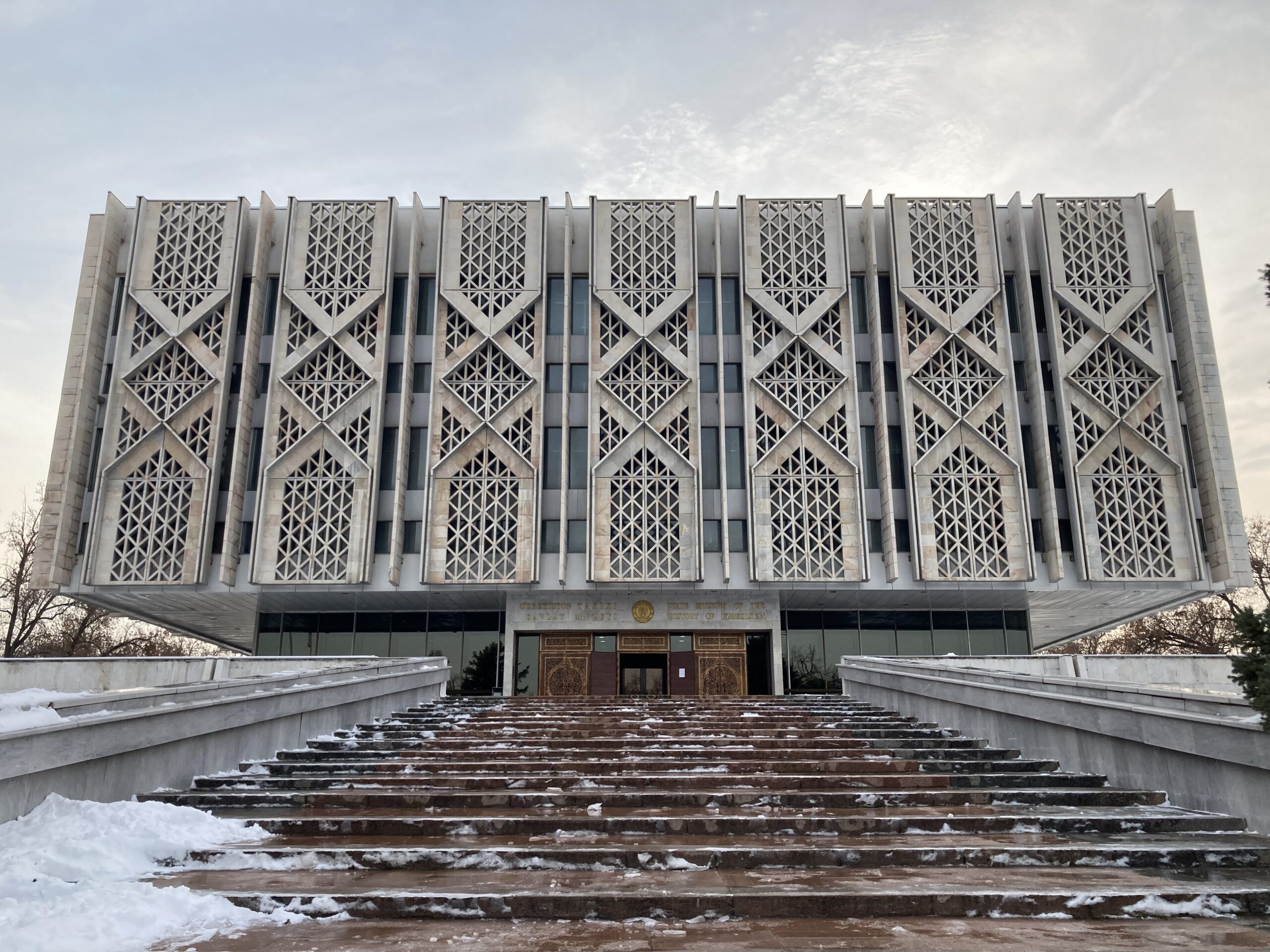
Perhaps the most striking aspect of this museum is its looks. Regardless of the angle one looks at it, this thing is a masterpiece of socialist architecture. It more or less invites all the nearby pedestrians in through its seductive looks, though that is not what happened to me. I knew very well what I was getting myself into.
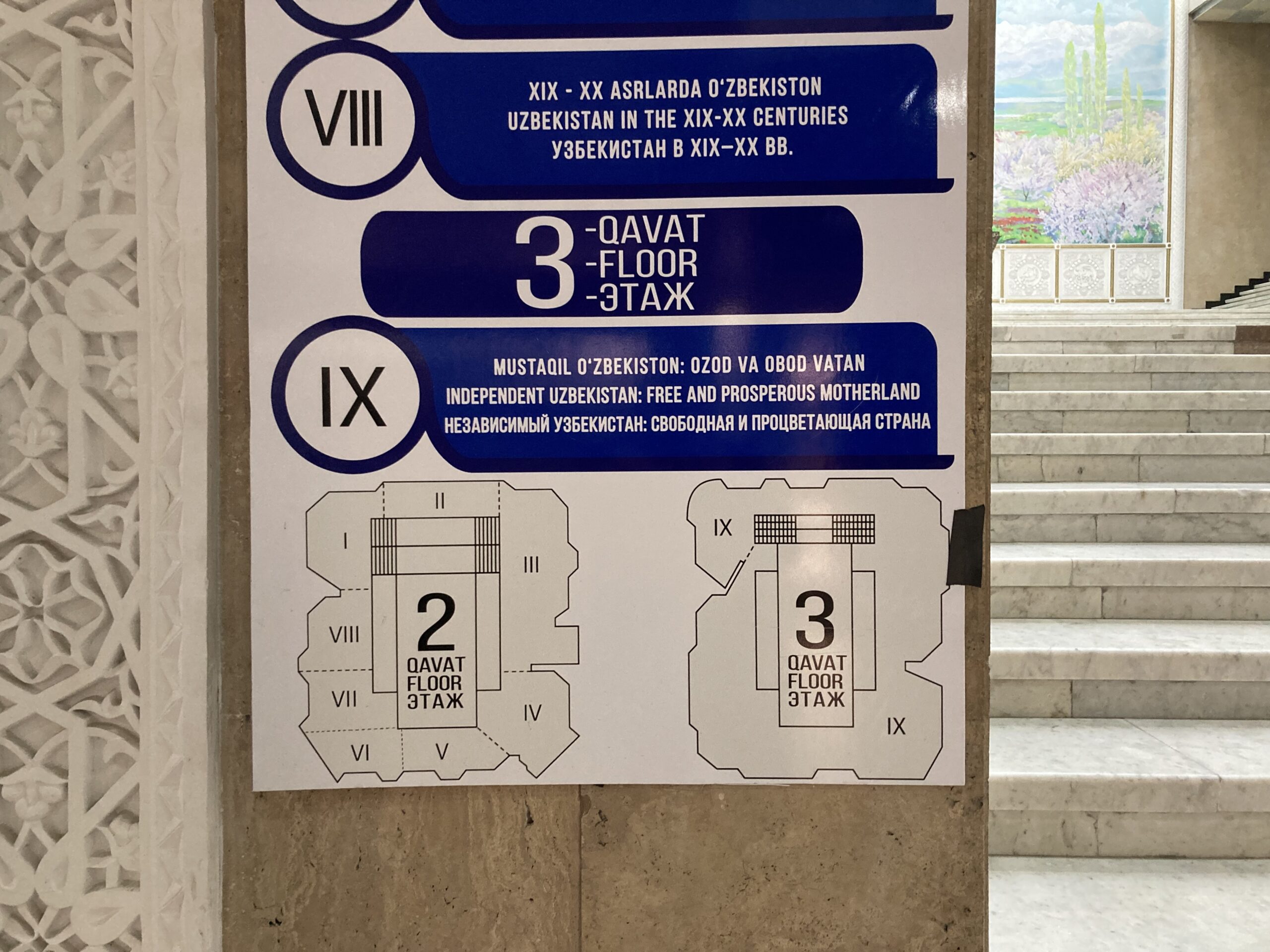
Before being charged the full fee for entry, I was briefly told that the third floor of the museum would be inaccessible at the time being, due to ongoing renovations there. This was sad, but it made me even sadder to see that this floor was dedicated to “Independent Uzbekistan: Free and Prosperous Motherland” no less! How could I miss the actual modern history of a new country despite visiting its museum of history? Demoralized, I went up the stairs to check out the second floor as the first one only had a bunch or art installations at the time.

This was the thought-provoking introductory text that greeted me as I entered the hall of exhibitions, and it managed to cheer me up a bit. I never get tired of seeing some history museums that go back to the stone age, making sure that the current locals “own” the ancient history as well, regardless of how distant and different it may be. I suppose I should stop being so sassy and just add that more than likely this whole text is a misunderstanding, a result of improper translation, as the whole use of English around the premises was improper to say the least. Perhaps what was meant was the ancient civilizations in Uzbekistan, rather than of Uzbekistan. Nevertheless, it is a fun read for sure.
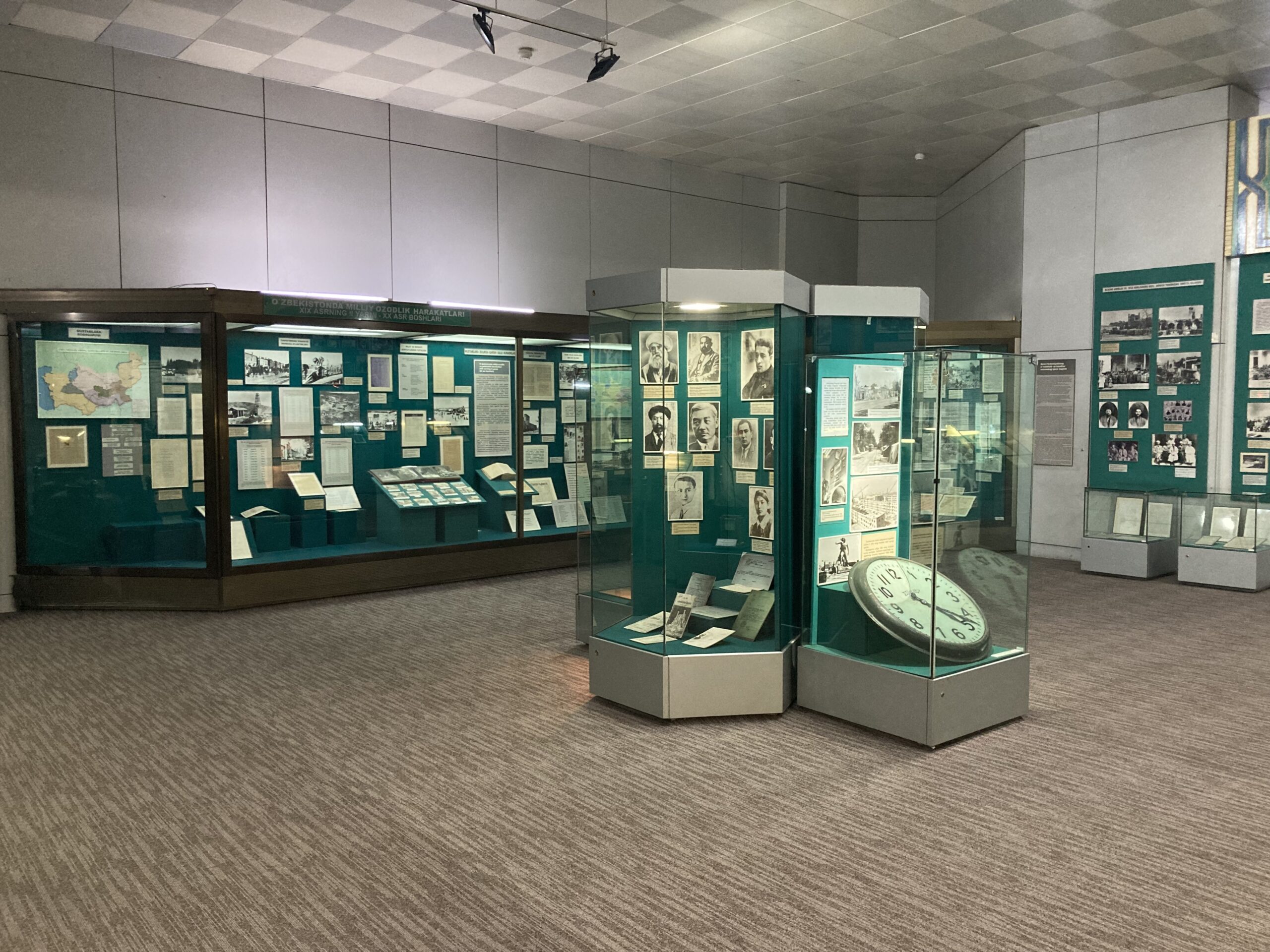
What is not so fun is this small hall, dedicated to the 20th century history of Uzbekistan. There were two halls dedicated to some stone age Uzbeks but apparently the last century full of incidents and actual texts and sources to show what had happened did not deserve too much of our time. The clock in the middle is in reference to the massive earthquake in the city that took place in 1966, after which the Soviet Union quickly rebuilt the town from scratch, with a metro system no less. There are just a few comments about that and a lot of letters and photographs depicting the political repression of the time, leaving very little if any space to anything else. I am used to it by this point, but the historian in me just dies a little every time I see a bigger hall given to stone/bronze age displays than modern ones…
Museum of Victims of Political Repression – https://maps.app.goo.gl/gc6etAUUTJ9ni7yW9
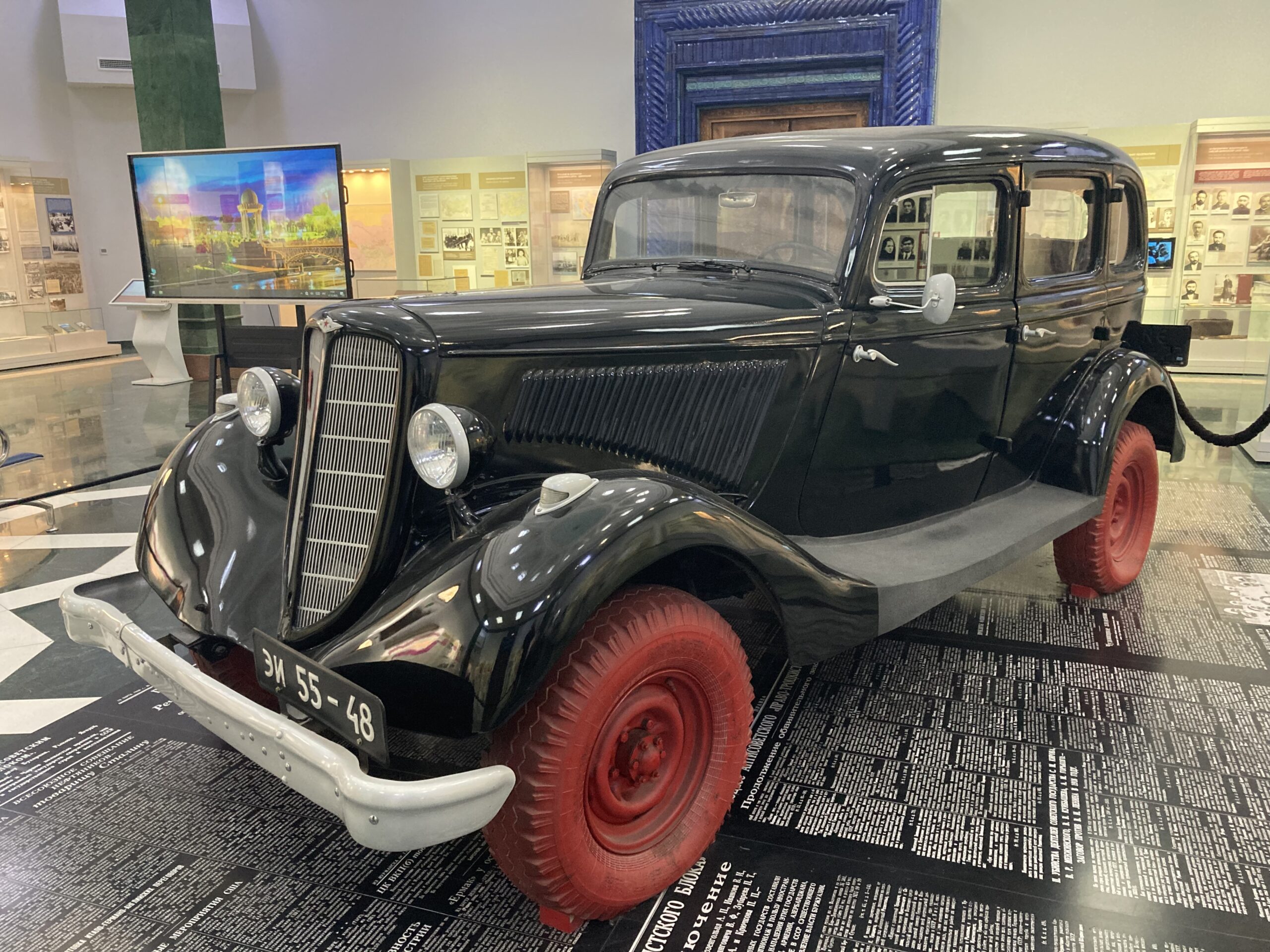
If you thought that this small hall was enough to cease the historical ties of the country with the Soviet Union, you are mistaken. An entire museum and a monument beside it are dedicated to commemorating the victims of political repression during the reign of the Soviet Union. Information here is in Uzbek and Russian, which leaves very little room for us outsiders to understand much of it. But then again, that was the case in the previous museum as well. At the end of the day, though one can crack a joke here and there, it does not take much to see that these museums are meant for the local population, to reinforce a specific Uzbek identity among the general populace. My snarky comments are pretty meaningless, because both places had a lot of students visiting them when I was there, which certainly do not know much English nor care for it.
Moyie Mubarek Library Museum – https://maps.app.goo.gl/2J6t17uSzykEn7DM7
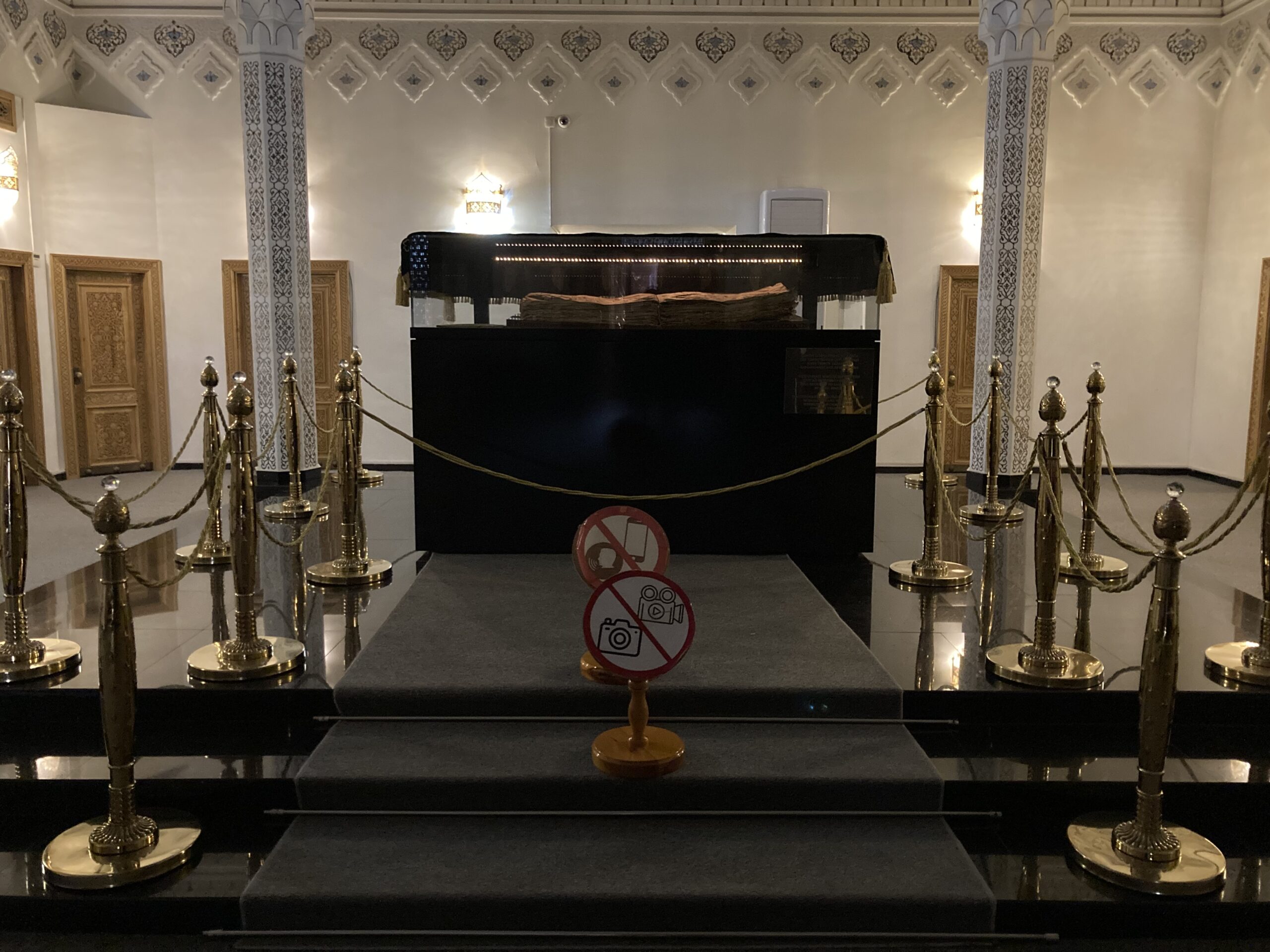
Not every cultural museum in Uzbekistan has to do with its recent Soviet past. There are many, if not more, that are dedicated to understanding the religious history of the country. This museum is one of them. You can see the mysterious Samarkand Kufic Quran here, which is the centrepiece of this whole museum.
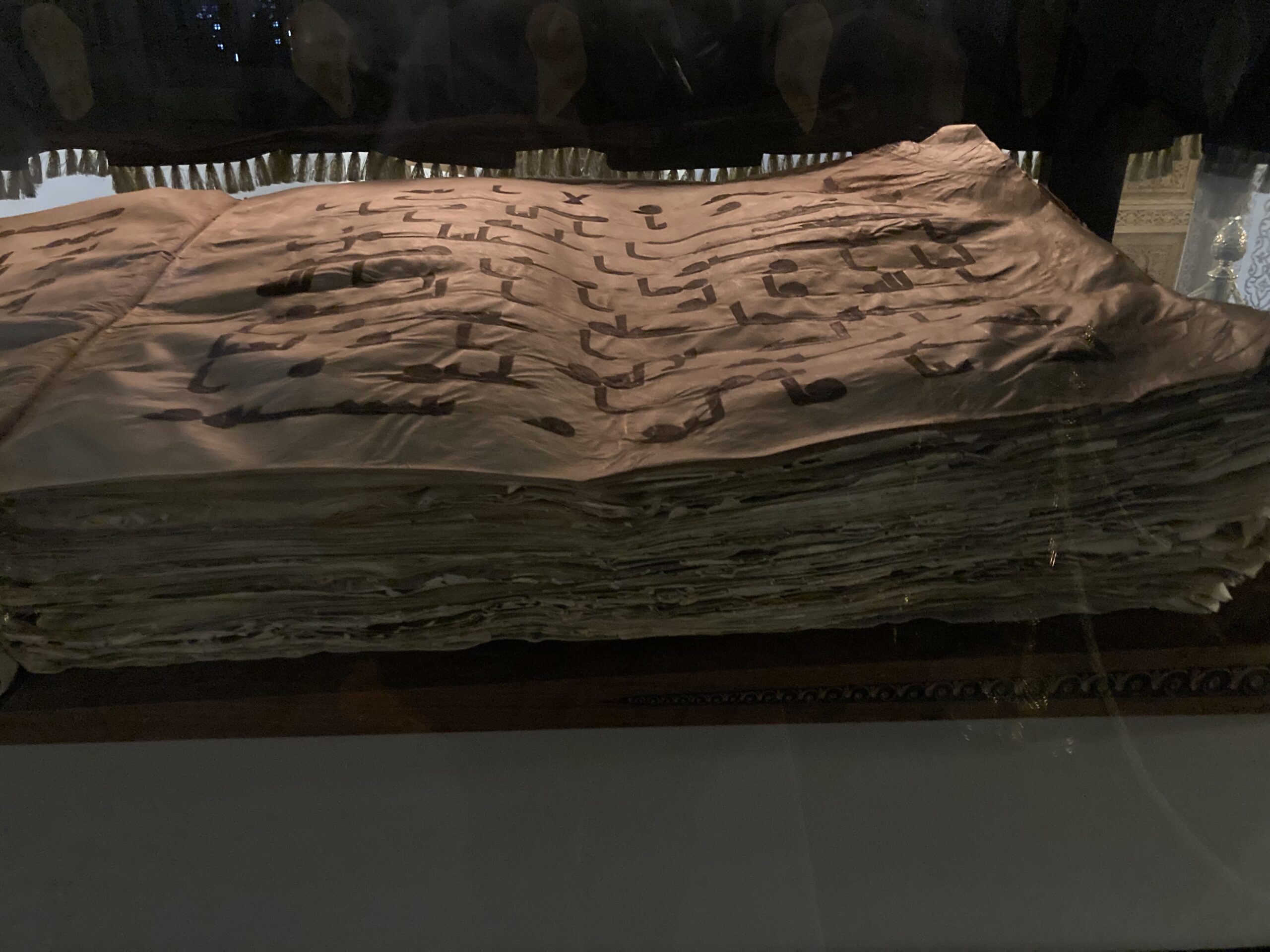
I said mysterious because we are not even sure from which period does this Quran hail from. It can be anything from 6th to 10th century apparently, which is as good as saying that it is ‘pretty old.’ It looks distinct in more than one way, but it is pretty hard to get a photo of it, which is not helped by the fact that you should not get a photo of it… Well here goes my not so legal attempt to take a sneak peek at it for all (two or three) readers of mine!
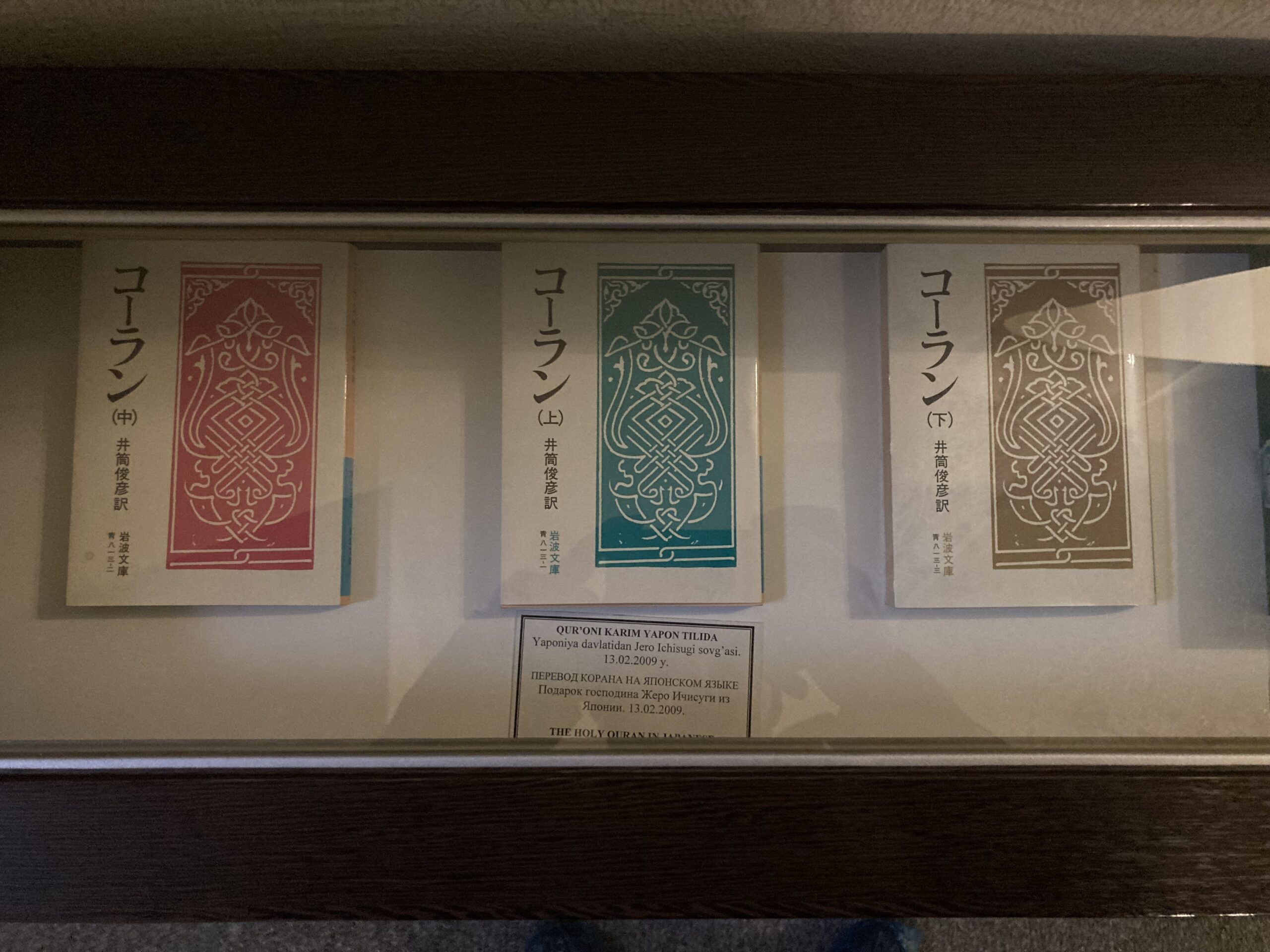
Of course, there are many other things to see in this museum as well, many other Qurans that is! You can find Qurans from around fifty different languages here, which was quite trippy to say the least. Finding how Japanese (like this one) or Tagalog Quran differs in its look and how these cultures interpreted what would a good ‘divine’ design could look like simply amazed me. I could have spent a good amount of time here, if only the lightning in the museum was designed a bit better to illuminate the details of all that is on exhibit.
Tashkent Art Gallery – https://maps.app.goo.gl/2wRQgvySs5gx2CET8
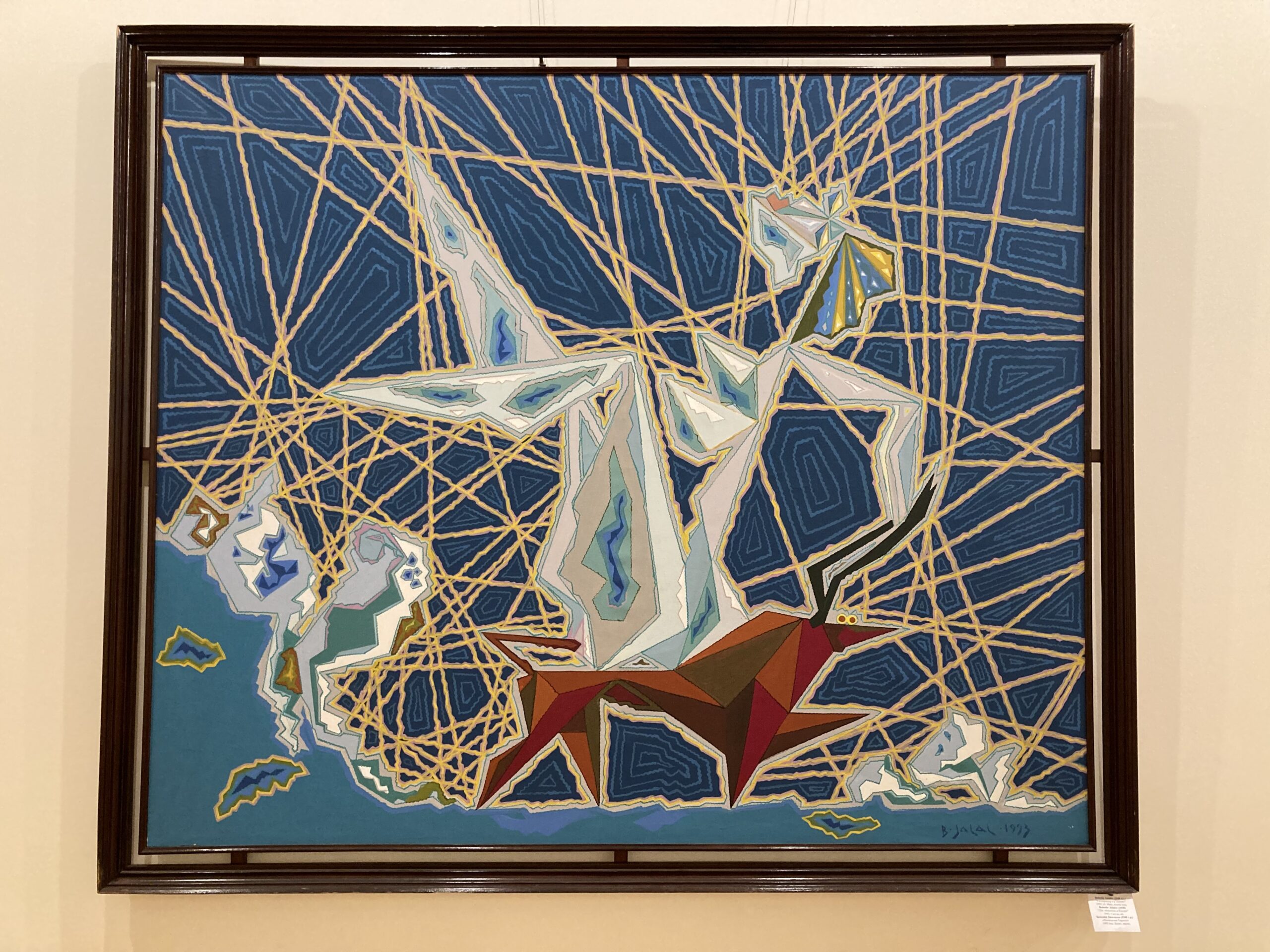
It seems like the main museum dedicated to art, the so-called State Museum of Arts has been undergoing some renovations for a long time. It was not open when I was there, which is a pity. A subpar alternative is the much smaller and apparently mostly temporary exhibitions found in Tashkent Art Gallery. It is around 4 USD to get in and in all honesty, if the temporary exhibition was not great (works of Alexey Shchusev) it really would not be worth it, because other than his designs all you get are a few paintings like the one above.
Central Exhibition Hall – https://maps.app.goo.gl/MzrxZEfWepxZPRot8
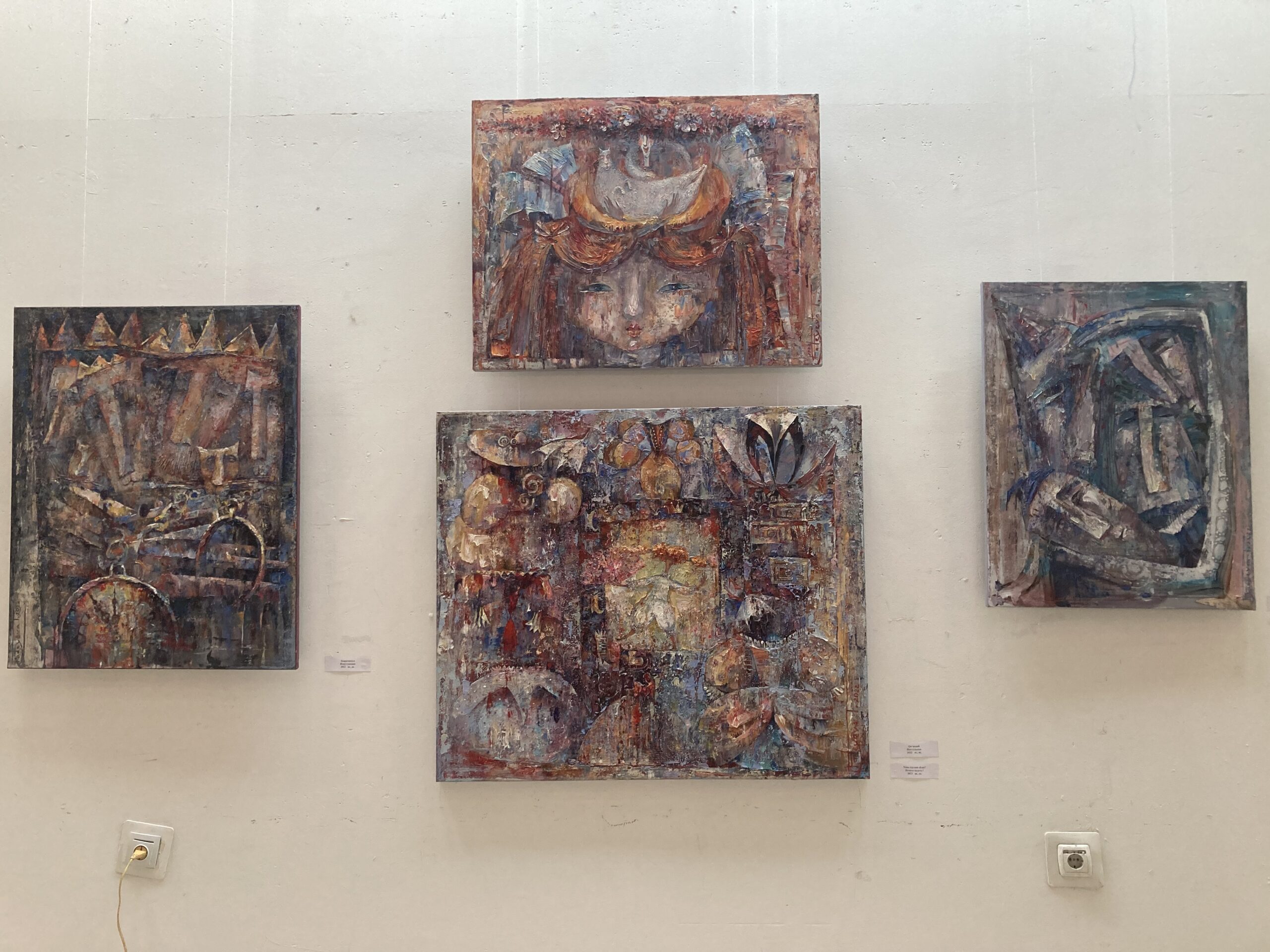
A free alternative to the above-mentioned Art Gallery would be the Central Exhibition Hall that is located a few hundreds of meters down the same road. It is even humbler in its exhibitions, as many seem to be done by novice artists studying in the local Academy of Arts. It is worth a short visit, but that is it. There does seem to be some smaller galleries attached to it selling artwork as well, so those may deserve your time if you are into that kind of thing.
Culture is an interesting thing. It seems natural, but it is often artificial. A visit to national museums like these ones often makes me question even some of the simplest things we know about the lives we lead. It is most certainly quite an interesting to do, but in all honesty, given their seeming disregard to use much English, you likely would not lose much if you skipped most national/cultural museums found in Tashkent, as it will be nigh impossible to make much sense out of them.
